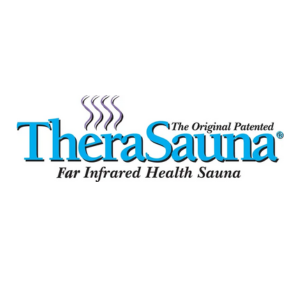UNDERSTANDING AND ADJUSTING
SAUNA TEMPERATURE
Sauna users have lauded the health benefits of traditional saunas for thousands of years.
However, there are rules to correct sauna usage that impact these benefits. Sauna temperature is one of them. If you've recently invested in a sauna or begun frequenting one at your gym, you may wonder what temperature the sauna should be.
There is no cookie-cutter approach to figuring out the best sauna temperature, but assessing factors such as your personal preferences, sauna goals, and the type of sauna you use can get you closer to your ideal heat setting.
Let's look into each of these factors so you can begin enjoying the ultimate sauna experience.
Why Does Sauna Temperature Matter?
We know that the heat in a sauna is the main driving force behind its health benefits. Does this mean any amount of heat is good for you? Not really. The correct sauna temperature plays a crucial role in manifesting health benefits. When we are in temperatures that contrast with our internal temperature, our body endures "heat stress" or "eustress." Before you stress out about this term, don't. This phenomenon is not stressful at all. It induces "positive stress" in our bodies to cool down, which increases our heart rate and blood circulation.
The benefits of heat stress include:
-
Relaxed state
-
Mood boost
-
Weight loss
-
Supple skin
-
Active metabolism
-
Increased stamina
Is this to say the higher the temperature, the greater the benefits? Well, yes and no. Heat stress, while beneficial, occurs when our bodies are exposed to an optimal temperature. A sauna is the best medium for deliberately inducing heat stress, but it needs to strike a balance between ideal and safe temperatures.
Unwittingly exposing yourself to excessive heat can have dangerous effects such as:
-
Dehydration
-
Heatstroke
-
Dizziness
-
Organ failure
Read on to discover how to safely practice and maintain an ideal sauna temperature.
What is an Ideal Sauna Temperature?
The sauna experience is all about optimizing, whether it is time or temperature. The ideal time for a sauna differs on various factors, including personal preferences. Early risers look forward to a sauna session in the morning to feel revitalized, while some like to wind down in a sauna after a long work day. Others believe a sauna session before a workout is beneficial.
Similarly, there is an ideal temperature for saunas, which can be subjective. What is a perfect temperature for you and your goals may not apply to someone of a different age group or at a different stage in their sauna journey.
How do you decide what temperature is best for you? Listen to your body. Pay attention to how it reacts to varying heat levels.
Your body will determine how much heat it can withstand based on factors such as:
-
Ambient temperature
-
Your level of sauna experience (beginner vs. seasoned)
-
Meal activity before the sauna session
-
Age
-
Physical activity
While heat stress benefits your health, it can be detrimental if you are overheated. The good news is that your body alerts you if this happens. If you feel light-headed or sick, exit the sauna and return after a brief cooling period. Aim for a higher temperature to achieve the desired effects if the heat is inadequate.
Let's discuss some general guidelines to determine your optimal sauna temperature.

Sauna Purpose
Identifying your sauna purpose can help determine the ideal sauna temperature and time. A sauna can serve various purposes. For some, it could be a way to unwind or socialize after a stressful day. For others, it could be a comforting respite from the cold. Some rely on it to remedy deeper issues, such as healing an injury or chronic pain.
Many fitness enthusiasts find it helpful to bookend their workout sessions with a sauna. A sauna after a workout session is a great way to ensure muscle recovery and boost cardiovascular health. Since your heart rate is already raised after a workout, you should spend no more than 20 minutes in the sauna. You must also check if the heat triggers discomfort and adjust the temperature accordingly.
Finnish Rule of 200 for Best Sauna Temperature
Finnish saunas have long endorsed the "Rule of 200" as a guideline for ultimate sauna nirvana. This rule attributes the ideal sauna comfort and resultant benefits to the interplay of two components:
-
Sauna temperature
-
Sauna humidity
According to the rule, the above parameters should equal 200 to meet the optimal sauna temperature criteria. For example, if you set the sauna temperature to 150°, the humidity level should be 50% for an ideal setting.
Although this is not a blanket rule for sauna goers, it is a handy yardstick for novices. Once you become a seasoned sauna user, you can tweak these settings based on your comfort and body's needs.
Understanding Wet and Dry Sauna Temperature
Traditional saunas are wood-burning or electric saunas used as wet or dry saunas.
Best Sauna Temperature for Wet Sauna
Wet saunas contain steam but are not to be mistaken for steam rooms. You can induce a wet sauna in a traditional wood-heating sauna by setting it to a high temperature for at least 45 minutes. Once inside, ladling water onto the sauna rock pile helps to create steam.
A sauna temperature range of 140–200°F is safe for wet saunas. For best results, you can set the temperature to 150–175°F. Another way to adjust the temperature in wet saunas is by starting at a lower temperature before ladling water. You can later adjust the heat to your liking. This gives you room to apply the Rule of 200 and balance out the humidity of the wet sauna.
Some people like spending time in the sauna while it preheats to acclimate to the rising temperatures. As you can see, there are many ways to arrive at an optimal temperature. The idea is to observe and decide what works best for you.
Dry Sauna Temperature Guidelines
Dry saunas feel strikingly different from wet saunas, especially for non-Finnish users who aren't used to them. Because there is no humidity and only dry heat, it can feel more intense than the moist comfort of a wet sauna.
With all this dry heat, the ideal temperature for a dry sauna is anywhere between 140 and 175°F. If you aren't used to the high heat of dry saunas, anything above this level will feel uncomfortable.
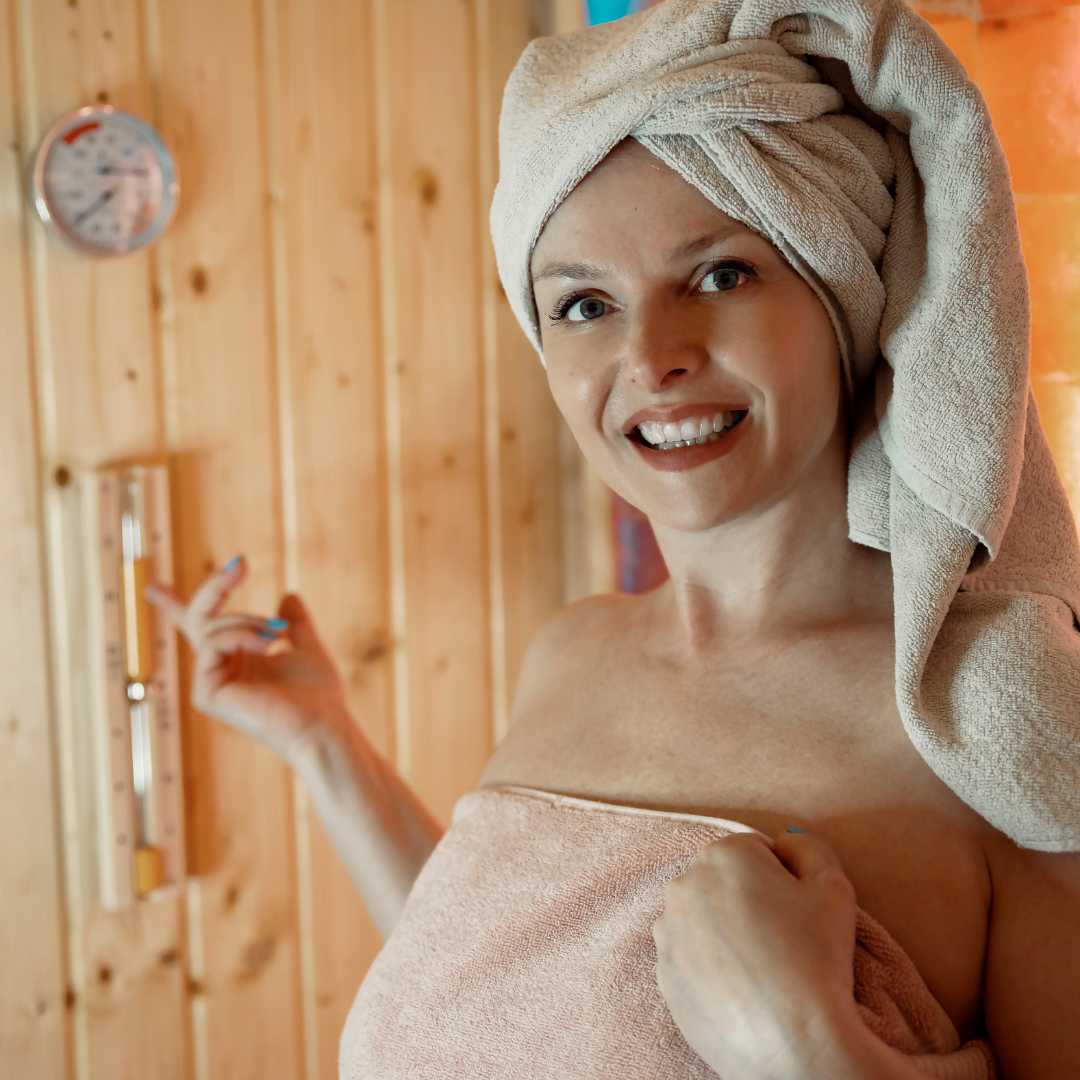
Other Tips for Sauna Temperature Adjustment
Novice sauna users may take time to learn the ropes of temperature adjustment, but that's perfectly okay! Use these rough guidelines to find your ideal heat setting.
Hot air can sometimes gather at the top of the sauna heater and is dissipated throughout the room by fanning, which raises the temperature. A simple way to make the sauna hotter is using a towel to fan hot air around the sauna heater.
Adjusting sauna temperature also depends on the sauna you use. For instance, a wood-burning sauna provides a more earthy setting but doesn't allow for precise temperature adjustment. It requires at least 45 minutes of preheating. You'll also need to perform ventilation checks and add or remove wood before you achieve the desired heat level.
Electric saunas have a temperature control switch that allows you to raise or lower the temperature. Some electric dry saunas even come with a safety switch that turns off the heat after a fixed time while keeping the space warm.
One of the best ways to increase the heat in a traditional sauna is to ladle hot water over the steaming rocks. The humidity adds a dimension to the sharpness of a dry sauna, inducing more sweating and deeper relaxation. This technique is rooted in the Finnish tradition of löyly, which we will explore in our next section.
Löyly: The Finnish Art of Sauna Temperature and Humidity
Löyly is an ancient Finnish practice essential to the sauna experience. The art of löyly is intertwined with the Finnish Rule of 200, which strives to achieve a sweet spot between temperature and humidity. It entails ladling water onto hot stones in a sauna to create steam.
The elements that influence a successful löyly include:
-
Sauna ventilation
-
Stone positioning on the stove
-
Quality of water used for pouring
-
Frequency and timing of water ladling
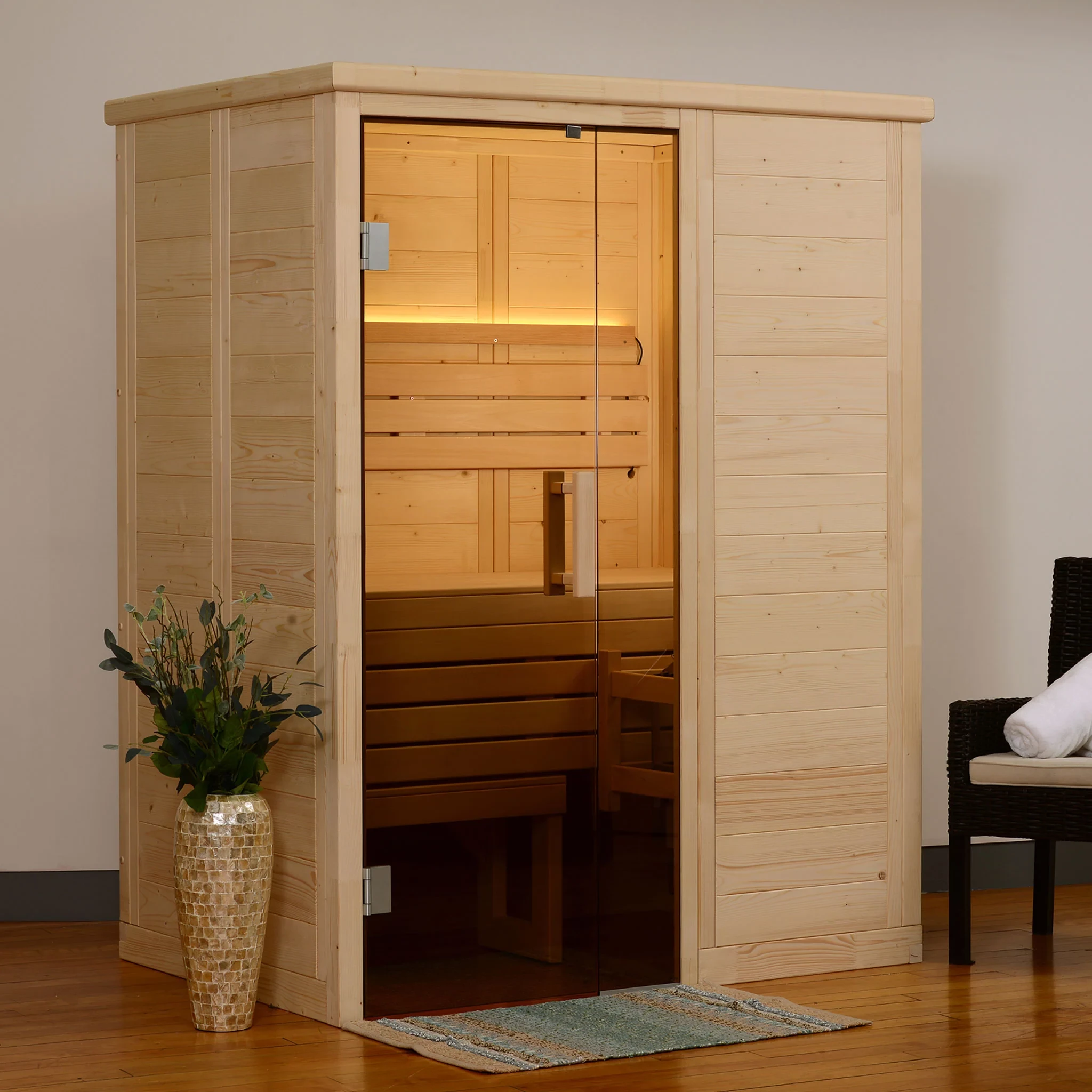
FAQs About Optimal Sauna Temperature
What is the Recommended Sauna Temperature?
To imbibe the most health benefits of a sauna, ensure the sauna is at least 150ºF. This varies according to the type of sauna you use and your personal threshold.
What Sauna Temperature is Considered Safe?
The Finnish Sauna Society advocates a sauna temperature range of 176–194ºF as a good safety standard.
Can you Acclimate to High Heat in Saunas?
Our bodies can gradually adjust to increased temperatures in a sauna. During your first session, start with a lower heat setting. Increase the heat progressively in later sessions until you achieve a suitable temperature.

Ideal Sauna Temperature: A Quick Summary
There is no magic number for the ideal sauna temperature. The number varies based on individual preferences, heat capacity, and your sauna goals. The ideal heat setting and time can also change for the same person, depending on when and why they use a sauna. Apply the above guidelines to determine what works best.
As much as we want to cater to our heat preferences in a sauna, remember that a community sauna cannot always accommodate everyone's temperature requirements. A group sauna will typically maintain standard heat settings.
If you're keen on regular sauna use and want more control over the heat, consider investing in a private sauna. Check out My Sauna World, a leading retailer offering an excellent collection of traditional saunas.
Feel free to contact us for further details. Our team is happy to guide you in selecting the best model that aligns with your needs.
SIGN UP. SAVE BIG.
Subscribe to be the first to know about our special monthly sauna sales, sent right to your inbox.

About the Author
Adam Fromson
Adam Fromson, co-founder of My Sauna World, loves saunas and their transformative health benefits. With years of experience exploring sauna culture and its impact on health and wellness, Adam is passionate about helping others discover the life-changing benefits of saunas for themselves.
Let customers speak for us
from 385 reviews
Good communication, easy delivery, easy set up, easy operation, great value. Recommended!
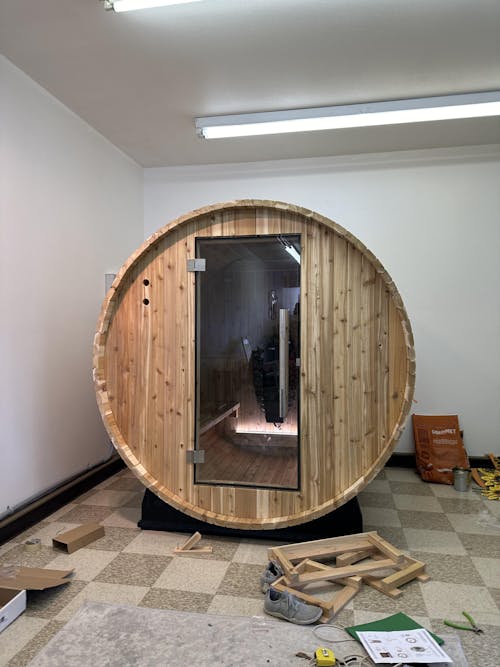
We ordered the 4 person barrel sauna and love it! We wanted a little extra space for the 2 of us/guests and it’s great. We could definitely fit 4 people in it if we needed. We use it every single day. It took about 10 weeks to get here because they build it specifically for the order. Putting the barrel together was fairly easy with 2 people. The electrical and the heater definitely required an electrician to install as we could have not done it alone.
We ordered the biggest heater (harvia spirit 8kw) and it heats up the sauna in about 15 mins inside our 40-50° garage. Overall this style of sauna is hotter and you sweat a lot faster than in an infrared sauna. I truly 10/10 recommend!
Pic is of us in the middle of building it.
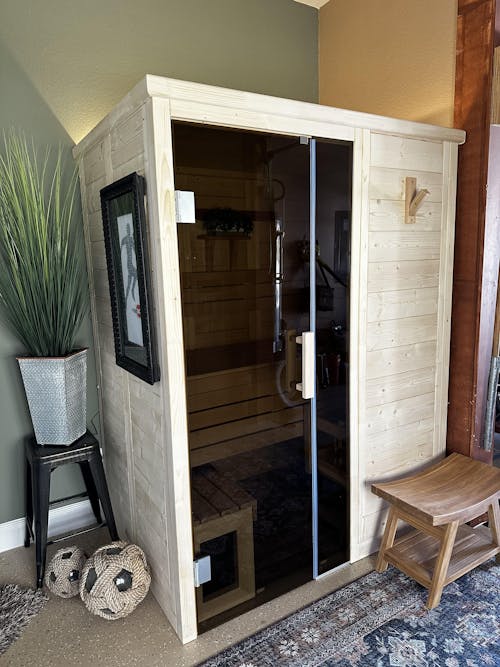
Took me about 6 hours over 2 evenings to assemble almost all by myself. Had a pro run a new circuit from my panel. Very well made and assembly was straightforward. Heater is well sized and reaches operating temperature in under 30 minutes.

Great sauna very easy to assemble

The salt panel was a great addition to our Madison Sauna. It has excellent grain which is accented by the amazing color lights that glow through the panel. Also when you hit the rocks with a splash of water you can feel the heat bounce off the panel. Great addition if you are considering this option.
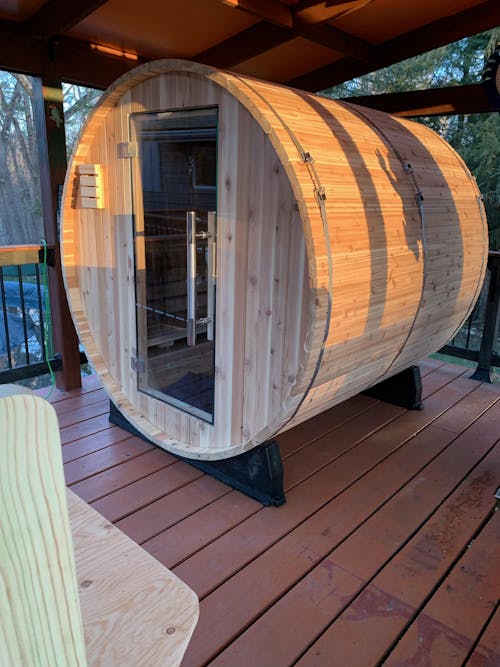
We can say enough about Sauna World there customer support is great! Our Pinnacle Sauna from Almost Heaven is epic.
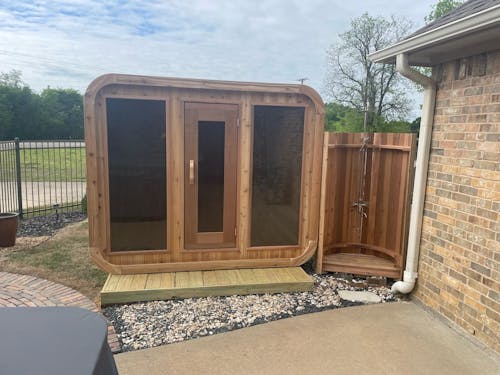
The finish and quality is outstanding and it was quick and easy to assemble.
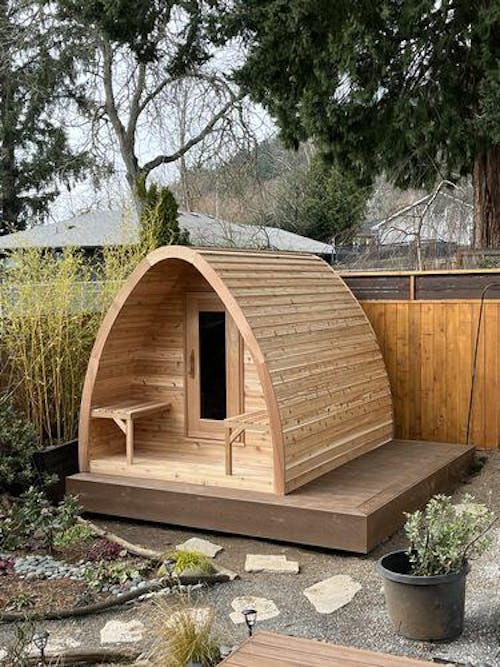
We are thrilled with our mini pod!! It came well shipped and our friend assembled it in 11 hours! Wow! We cannot wait to get healthy and sauna it up!
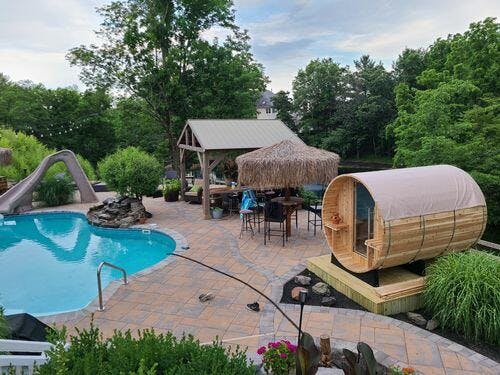
Beautiful sauna!!! Much easier than I expected to assemble, took a total of 4 hours. Can't wait to get warm by the pool on those cool evenings. Customer service was excellent..

Purchased a 2 person Almost Heaven barrel sauna and were delighted with the product. The order process was quick and easy, the sauna arrived on-time, installation was simple, following the provided instructions, and the sauna is extremely high quality. We’ve used it daily for over 2 weeks and quite frankly I don’t know how we lived without it. If I had it to do over again I wouldn’t change a thing... except maybe purchasing a 4 person model to easier share with friends!
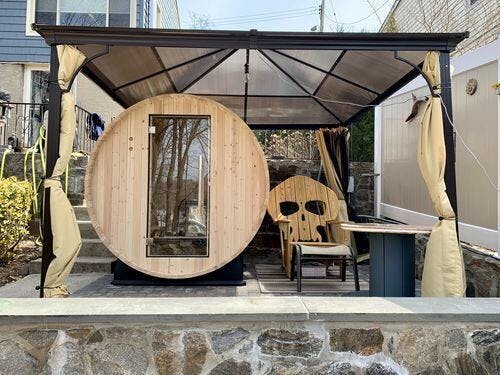
Great Customer Service and a breeze to put together.Excellent shipping and the Sauna is top notch, couldn’t be happier




























